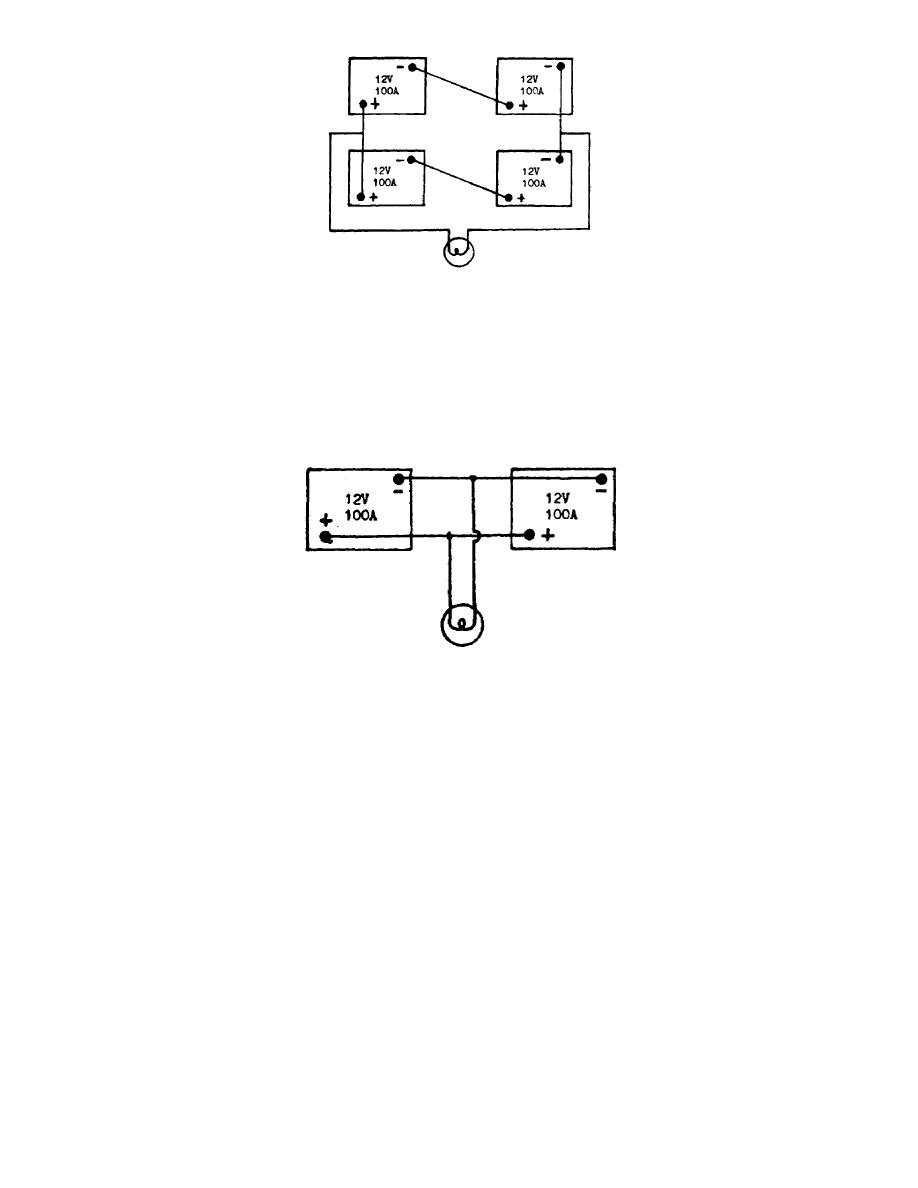
Figure 24.
12-volt, 200-ampere-hour supply.
f. Batteries are connected in series-parallel to increase both the voltage
and ampere-hour rating. To demonstrate how to make use of the series-parallel
connection let s say that we require a 24-volt, 200-ampere-hour power source. We
will use four 12-volt, 100-ampere-hour batteries. The batteries are first set
apart into groups of two. In each group the batteries are connected in series so
they will provide 24 volts and 100-ampere-hours per group. Then, the two groups
are connected in parallel to increase the capacity rating to 200 ampere-hours
(fig 25).
Figure 25.
24-volt, 200-ampere-hour supply.
15. CHARGING METHODS.
a. Any time the gravity of a battery drops below 1.225 it is best to
recharge it with a battery charger under controlled conditions. The two principal
ways of charging are constant current and constant potential (voltage). The method
used will depend on the equipment and facilities available. Constant current
charging is usually done only at installations where a regular battery shop is set
up. Several batteries are generally connected in series when charging by the
constant current method. When connecting the batteries their combined voltage
should never be higher than the charging voltage. Allow 2.5 volts per cell when
adding up the battery voltage. All batteries in the same series should be in about
the same condition. Batteries being charged by the constant current method must be
checked often, particularly in the final stages, to prevent overcharging.
OS 010, 3-P29




 Previous Page
Previous Page
